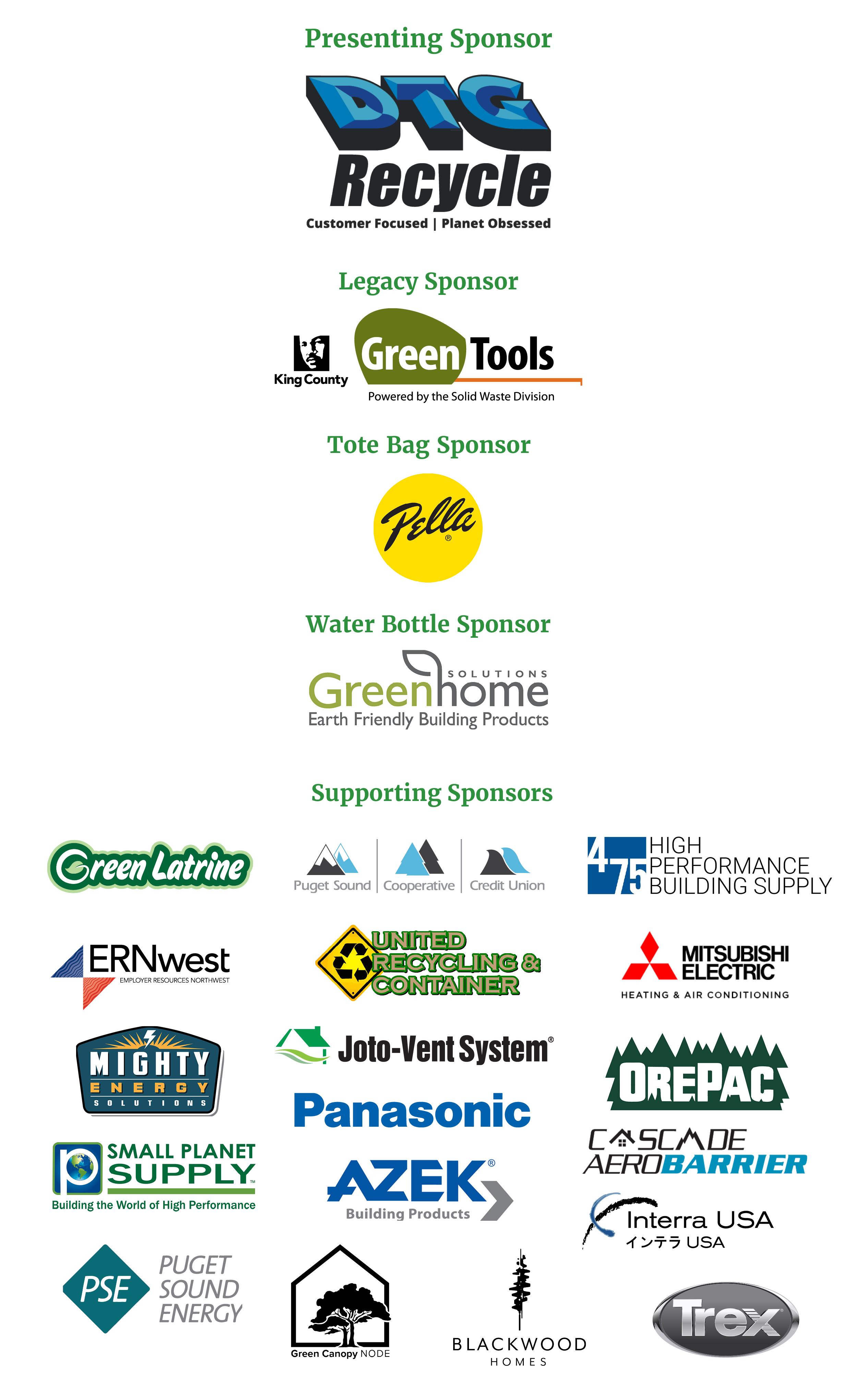The 2022 Built Green Conference, presented by DTG, was held on September 15 at South Seattle College. We would like to extend a huge thank you to those who sponsored, presented, attended, and volunteered to make the Built Green Conference such a success. The day was filled with reunions, new connections, networking, and captivating sessions tackling everything from building science to policy to increasing housing and affordability in our communities.
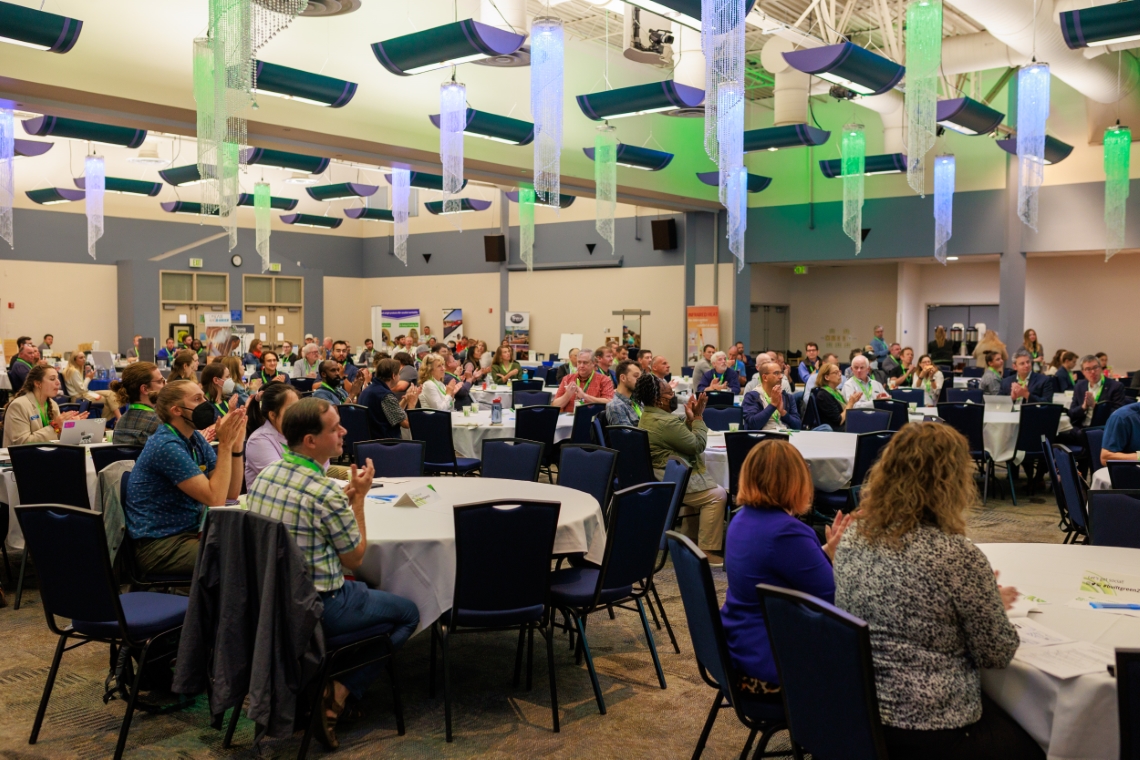
Throughout the day the year’s theme “Becoming the Change” was embodied by our speakers. They shared personal stories and concepts that delved into topics of equity, affordability, resiliency, and innovation to inspire more people to take a chance on change. Attendees agendas were filled with educational sessions covering housing policies and codes to reduce sprawl, provide more diversity in housing types and price points, and to reduce carbon emissions, field practices to ensuring air-tight thermal envelopes and efficient HVAC designs, best practices to increase community engagement during the development process, initiatives and actions for increasing homeownership opportunities among our black and African American populations, creating a local circular economy using salvaged and reused materials, establishing partnerships to address housing affordability, and how to implement the latest tool to calculate the embodied carbon in buildings.

Every year the U.S. house building industry emits more carbon than the entire country of Sweden.
Our morning keynote, Chris Magwood, Director, Builders for Climate Action, began the day by sharing the story of how his belief that housing is a basic human right led him take a leap to build his own home with the goal of it being in the form of DIY, mortgage-free, and with back-to-land self-sufficiency. This led him to building a straw-bale house, and when he was not able to afford connecting it to the grid or being able to drill a well he used solar panels for energy generation and rainwater collection for on-site water use. However, soon his daughter was asking him, “what do we do about climate change?” Magwood asserted that while energy efficiency of homes was important, it was not the full picture of a building’s impact on the planet and meeting our carbon reduction goals to avoid the worst predictions in climate change. What was missing was the upfront carbon emitted and stored in the construction of them. But how big of an impact is it and are there practical ways we can reduce it? First, through his and others research, Magwood reported that the impact was huge - every year the U.S. house building industry emits more carbon than the entire country of Sweden. Second, Magwood emphasized that with some material swap-outs in concrete, insulation, and cladding, that are readily available on the market and equivalent in price, builders can reduce the home’s embodied carbon by 20-65%. Then taking steps over the next 5-10 years to change over to using more innovative and carbon-storing materials could led to the removal of carbon from our environment and help to reverse trends in climate change. To learn more about these techniques we recommend checking out Chris Magwood’s new book, "Building Beyond Zero: New Ideas for Carbon-Smart Architecture," that is co-authored with Bruce King!
Following our keynote address, conference goers had the opportunity to attend sessions from five different tracks: Advancing Policy, Rethinking Materials, Innovating Affordability, Decarbonizing Construction, and the newly created Foreman’s Guide to Built Green basics.
Session Highlights and Take-Aways
Bambi Chávez, Housing Development Consortium, Michael Brown, Civic Commons, Donald King, Nehemiah Initiative Seattle, and Ryan Donohue, Habitat for Humanity Seattle, King & Kittitas Counties, and Allison Butcher, MBAKS, described the detrimental impacts that systemically racist housing, zoning, and lending practices had on black Americans achieving equitable opportunities for homeownership. Our region is more segregated, now then immediately following the ending the practice of redlining, and the generational wealth gap between white and black Americans is only increasing. Civic Commons launched the Black Home Initiative (BHI) to implement the 7-Point Plan with the initial goal of generating 1,500 low-to-moderate income, first-time Black homeowners within five years in South Seattle, South King County and Northern Pierce County. They advised supporters of this initiative to be openly active and vocal advocates about what happens in your backyard and focusing resources towards those in the least equitable position to obtain the wealth building opportunity of development and homeownership.
“By focusing on the population farthest from the goal, it will drive it for the rest. If we can solve this for black people, then we will be solving it for everyone.” – Donald King
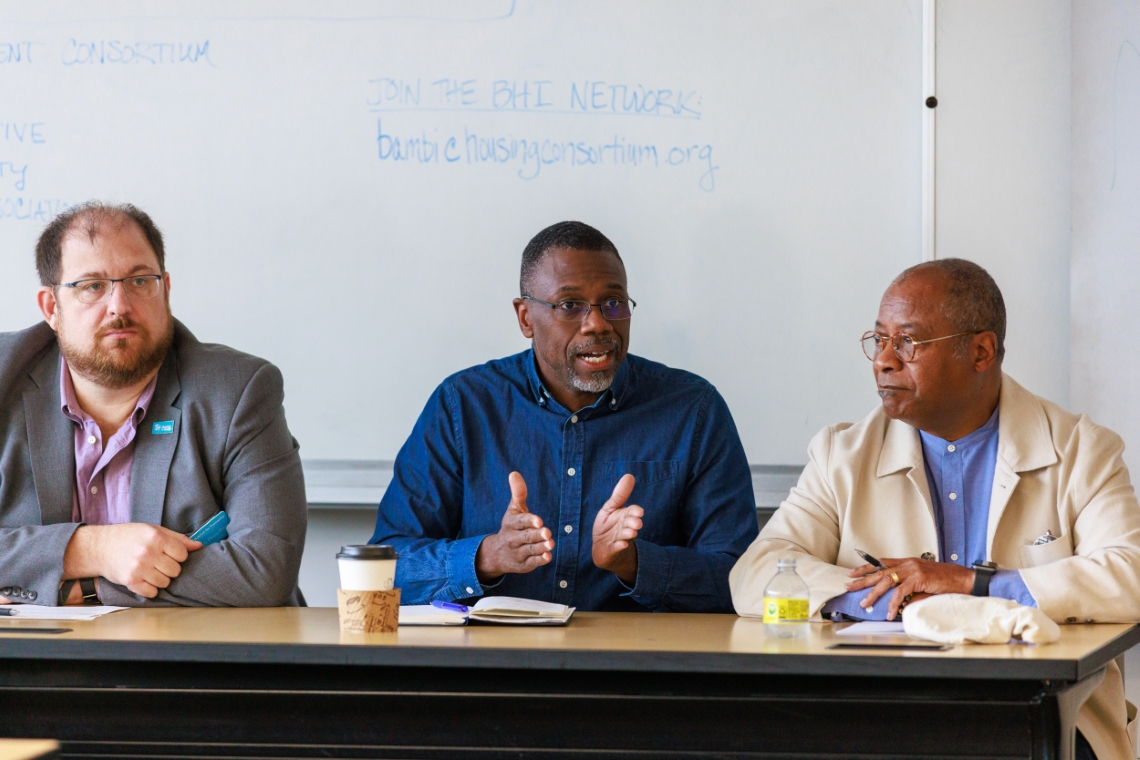
Tess Studley, BetterBuiltNW, and Greg Lasher, TRC Companies, dived into how the 2018 WSEC has impacted the way homes are being built. They urged home builders to consider reallocating design resources to air leakage reduction, envelope improvements, and efficient HVAC distribution that are currently underutilized, but represent significant opportunities for impact and additional energy code credits.
Amanda Harryman, Second Use, presented the waste that linear economic and material systems creates and how creating more circular economies and buildings benefit not only the planet, but builders as well. Over half of all extracted materials are used in the built environment, of the materials delivered to the site up to 30% will leave the building site unused and wasted. This represents significant impacts on the planet, but also impacts builders bottom line. She showcased local and international examples of award-winning projects that implemented a circular economy mindset when they designed and specified materials for the buildings. To support the development of our local circular economy she urged builders to increase the supply of reusable building materials through deconstruction and salvage, then to also specify and designing with reused materials to increase demand.
"Missing middle" housing is a range of house-scale buildings with multiple units—compatible in scale and form with detached single-family homes—located in a walkable neighborhood. There were two sessions focused on creating policies and land use codes that allow for the expansion of missing middle housing types across Puget Sound cities. In the first session Joseph Tovar, Washington State Department of Commerce moderated a panel of Mayor Mason Thompson, City of Bothell, King County Councilmember Claudia Balducci, and Yorik Stevens-Wajda, City of Everett discussing community concerns that are often brought up during conversations surrounding missing middle housing policies and zoning regulations. Panelists encouraged attendees to advocate to the public and organize local elected officials to support local zoning changes to support more missing middle housing types. In the second session Beth Jarot and Elliott Barnett, City of Tacoma, and Brett Marlo, Tacoma Planning Commission member, highlighted Tacoma’s missing middle housing program, Home in Tacoma. The program is a part of Tacoma’s affordable housing action and growth strategies that is aiming to balance housing goals with design, livability, historic preservation, urban forestry, public infrastructure and services, among other important community goals.
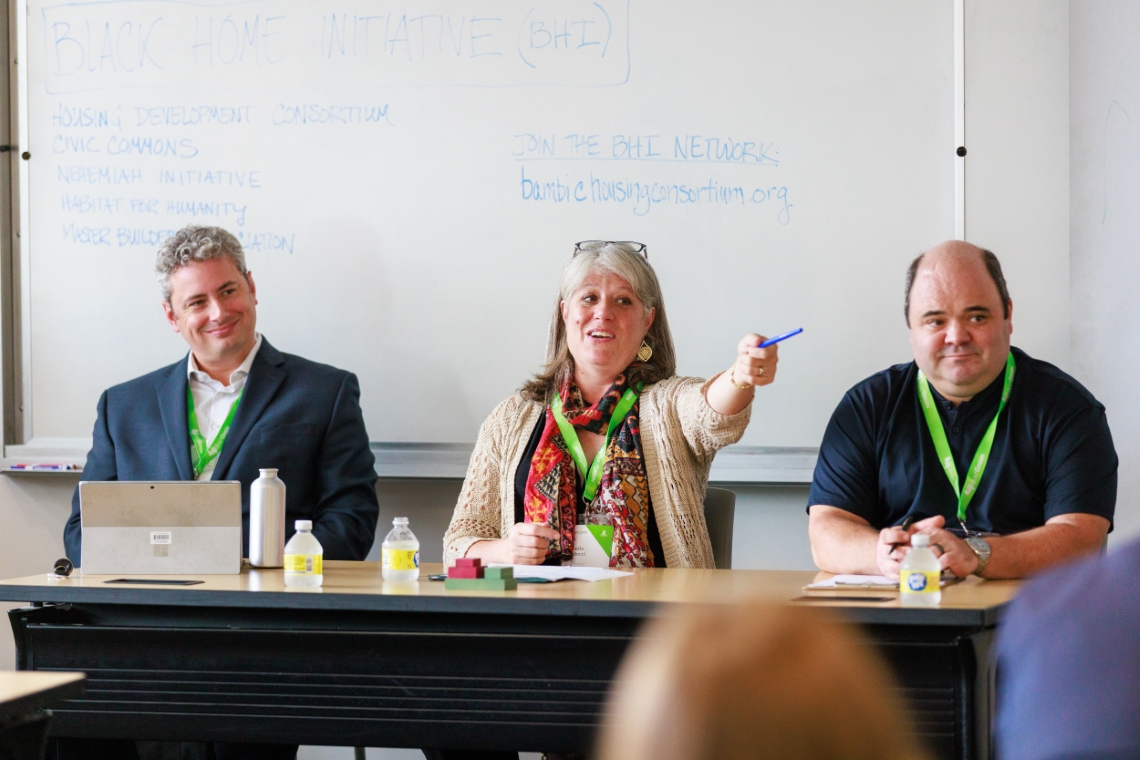
Greg Davenport, Mitsubishi Electric, provided session attendees a global perspective on how innovative cities across the globe are working on implementing sustainability and affordable housing strategies through their climate action and comprehensive plans. He then brought it back to two local case studies of Solis and Ellie Passivhaus apartment buildings. Both are targeting Passive House certification, by reducing energy consumption between 80-90%, with only a 5-10% incremental cost over a standard build. Greg emphasized the need to start with a good building envelope before directing attention to HVAC and water heating equipment and design. In cooler winter climate zones utilize cold climate heat pumps to avoid the use of fossil fueled back-up space heating systems.
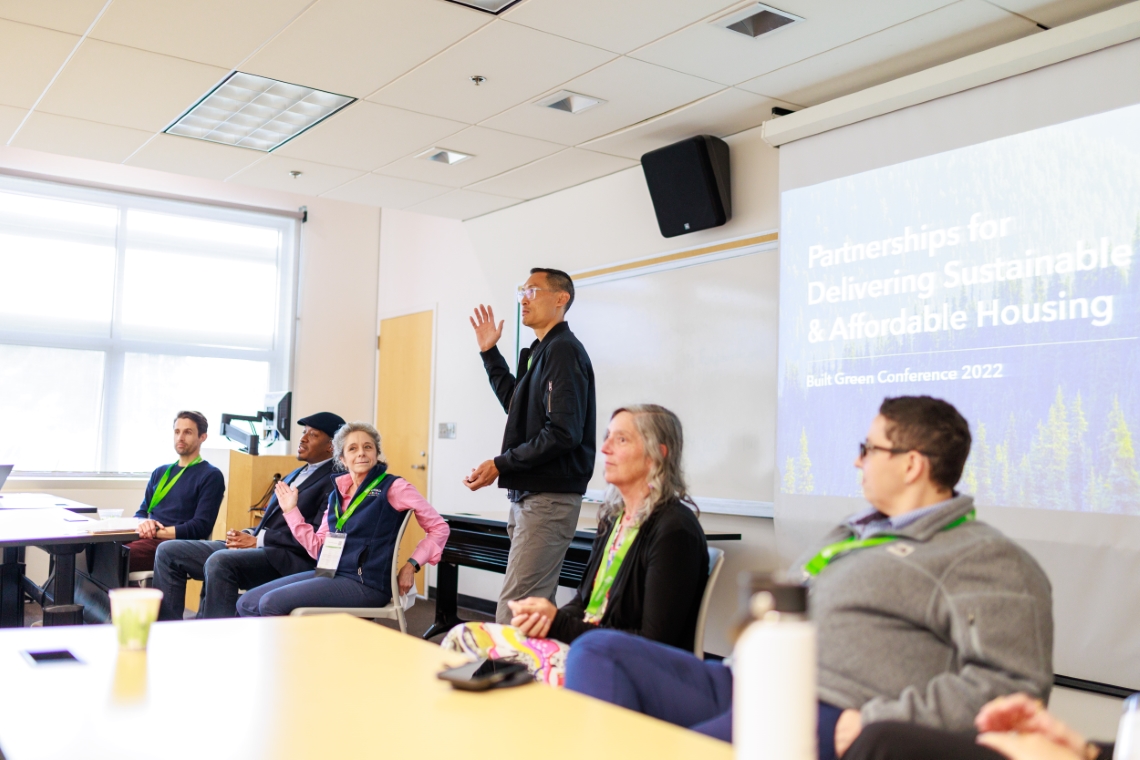
Panelists Sam Lai, Green Canopy NODE, Kathleen Hosfeld, Homestead Community Land Trust, Muammar Hermanstyne, Africatown Land Trust, Carly Colgan, South Puget Sound Habitat for Humanity, Tessa Bradley, Artisans Group Architecture Planning, and Lisa Vatske, Washington State Housing Finance Commission presented real examples of partnerships that are delivering sustainably built affordable housing units across the Puget Sound region. Examples included the 2022 Built Green Hammer awarded Village Garden townhomes and three projects that aim to deliver over 100 affordable housing units in south sound communities, some of which will be targeting Passive House certification. All the panelists stressed that the current narrative that sustainability and affordability are mutually exclusive is false and that strong collaborative partnerships can bring innovative thinking to address both the housing and climate crises.
“Too often we are given a forced choice to either build for affordability or sustainability. It’s urgent that we build more affordable housing. It’s urgent that we address climate change. We must reject this false choice. We must do both now.” – Kathleen Hosfeld
Boots on the Ground Education
New to this year’s conference we offered a brand-new track, the Foreman’s Guide to Built Green Basics, to assist those that manage the day-to-day site work on Built Green and high-performance building sites. The three-part track provided an overview of the Built Green certification program, incorporating effective air control layers, and the implications of HVAC on airtight homes. Josh Salinger, Birdsmouth Design Build, and Greta Tjelveit gave practical advice on not just how to detail these areas, but also how to manage a project and one’s team to set them up for success. This new field-relevant educational content was a welcomed addition to the lineup and was highly engaging for attendees - Look forward to seeing more of this type of educational offering from Built Green in 2023!
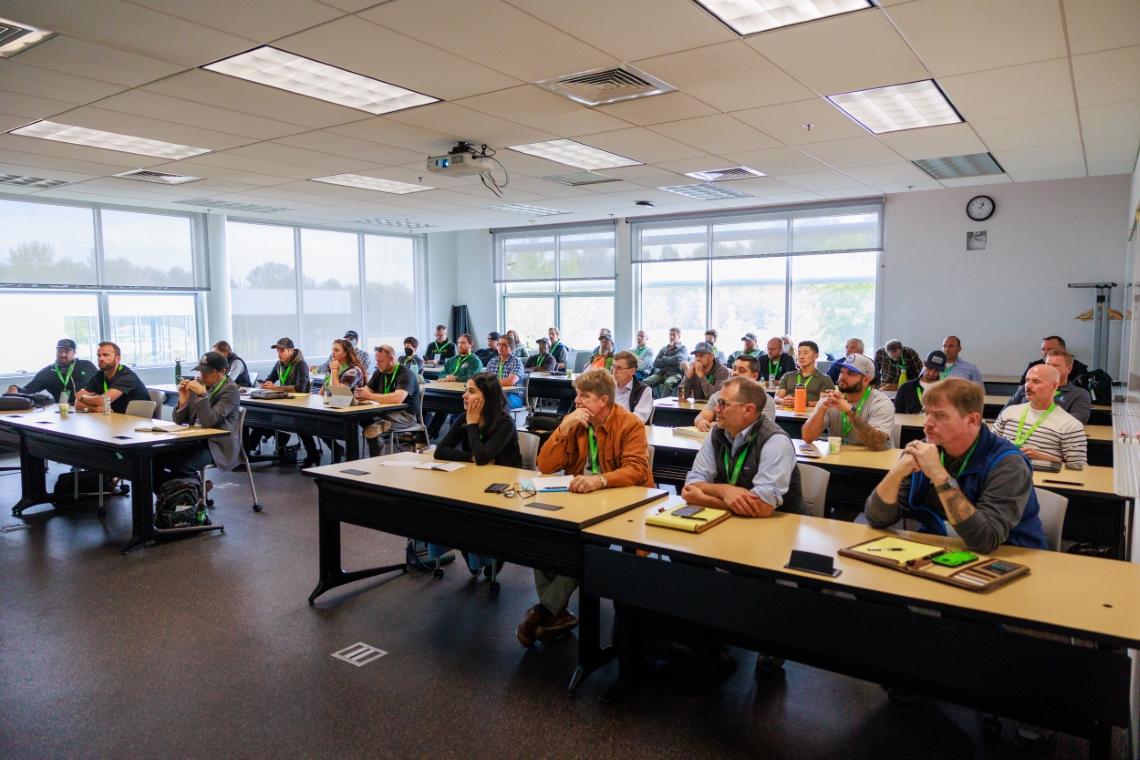
Stories in Change Leadership
Wrapping up the day was the Change Maker’s Keynote Panel, moderated by Tadashi Shiga, Evergreen Certified. A change maker is someone motivated to take intentional and creative action to solve a social problem for the greater good. The accolades of the change makers on this panel Trevor Johnson, Blackwood Homes, Whitney Lewis, GGLO, Anthony Maschmedt, Dwell Development, and Grace H. Kim, AIA, Schemata Workshop, could fill an entire blog post. Each one representing a different facet within our homebuilding industry with unique perspectives and stories of risk-taking, sleepless nights, and the rewards that made it all worth it.
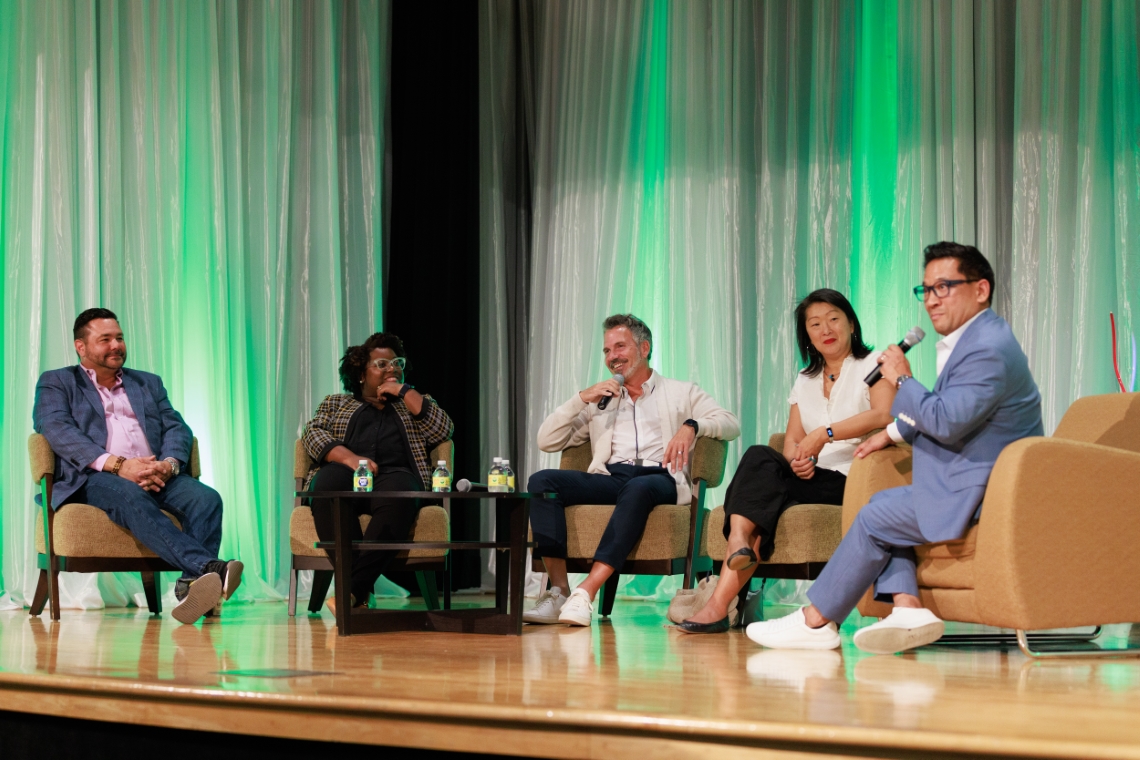
Driven to combat the loneliness that is often the result of current community designs, Grace developed a cohousing community of intentional and supportive neighbors who share meals, cups of sugar, and watch out for each other’s children. Anthony left a successful national career of selling hair products to push the envelope in green home construction. Once he caught the green building bug, and started winning national awards, he was forever hooked to chasing the next big housing innovation. Only 2% of licensed architects in the U.S. are black, of that only 0.4% are black women. During her early career Whitney described the experience of having to give voice to an entire community that was marginalized and made to feel as if they did not exist. Collaborating with community members on projects like Africatown and Acer House is a humbling process but provides the greatest outcomes. After years in the construction industry Trevor noticed that there was a lack of quality homes in his own backyard. Not satisfied with just changing communities locally, through committing to increasing the housing supply in our region and building accessibility ramps at MBAKS’ Rampathon, his team also builds and donates homes in Honduras. All these panelists took leaps, challenged the status-quo, pushed through the struggles to find their own rewards and encouraged the audience to do the same.

We hope everyone who came to the conference learned something new, connected with friends, and walked away feeling inspired. We hope to see you next year!
